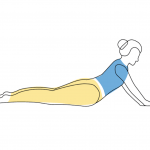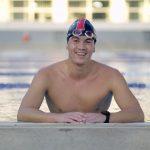View from the Water – Should we go Dutch?
Last summer I took part in Pampus Rondje, a swim in Amsterdam. Talking to people there, it became apparent that the Dutch take learning to swim very seriously.
Heidi Oudejans is the programme manager for school swimming for the Municipality of Amsterdam. She says: “Being a city with lots of open water, the City of Amsterdam wants children to master basic swimming skills. The City’s policy is: parents or caretakers are the first ones responsible for letting their children take swimming lessons. However, reality shows us that not all parents are able to take this responsibility. In most cases this is because parents cannot afford to pay for swimming lessons. In other cases, it’s because they are not aware of the existence (or importance) of such lessons.
“For this reason, primary schools can let their pupils in group 5 (ages 8 and 9) partake in ‘school swimming’. The City of Amsterdam offers school swimming which entails a broad range of swimming skills. We teach beginners how to swim and we have swimming certification programmes for the more advanced pupils.”
The results are impressive. By the age of 12, around 92% of Dutch schoolchildren have achieved at least the lowest level certificate. It’s worth looking at what that includes:
- Dressed in shorts, shirt and shoes: jump into the pool, submerge fully, come up, tread water for about 15 seconds, then swim 12.5 metres using breaststroke, then go under, flip over and swim 12.5 metres backstroke
- Jump or dive into the pool, swim underwater for 3 metres and swim through a hole in a canvas hanging in the water vertically
- Swim 50 metres breaststroke, followed by 50 metres backstroke
- Swim 5 metres front crawl and 5 metres back crawl
- Float on the back and breast for about 10 to 20 seconds
- Tread water for a minute including doing some turns.
In the UK, swimming instruction is a National Curriculum requirement. Children are expected to achieve the following:
- Swim competently, confidently and proficiently over a distance of at least 25 metres
- use a range of strokes effectively
- perform safe self-rescue in different water-based situations.
The difference is profound. The Dutch set high standards and nearly all children achieve them. The UK has an easy target yet more than half of students leave primary school without being able to swim. According to the 2013 School Swimming Census: “The statutory KS2 requirement for a child to swim 25m unaided is met by only 49% of state school pupils.”
It’s not just a case of funding, although that is essential. Ensuring all children learn to swim requires political leadership and flexible thinking. In Amsterdam, it is not all left to schools. The City also provides summer schools, additional tuition in the shorter holidays and after-school lessons to help students who have fallen behind. Busses are provided for schools that are more than a kilometre from the nearest pool. Every school, whether they take part in the City’s programme or not, is expected to report its certification levels annually and 98% do so. Swimming is important.
In the UK, there is a new All Party Parliamentary Group for Swimming in Westminster. It held its first meeting in September 2017. Its aim is to “make swimming more accessible and affordable for everyone as a way to keep fit.” This is commendable and something we fully support. We also know that Catherine West, the MP who founded the group, cares deeply about children’s swimming. We urge the group to look at what happens in Amsterdam and adopt their best practices to end the scandal of millions of children in this country being unable to swim.
Simon Griffiths is the founder and publisher of Outdoor Swimmer
Email Simon at: simon@outdoorswimmer.com








